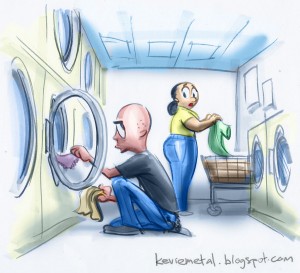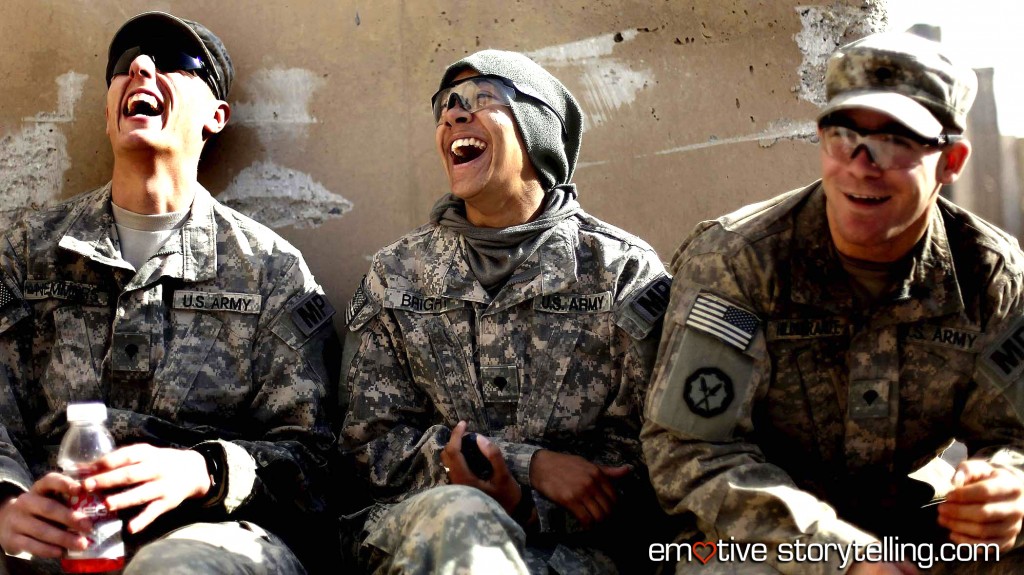 The little boy loved to play army with his friends. There were the battles, the victories and the teamwork. As he grew older, he dreamed of doing something meaningful with and for other people. So he enlisted. But he never dreamed he would feel intense isolation after the battles ended and the teams disbanded. He would be alone with flashbacks of fear, guilt and horror.
The little boy loved to play army with his friends. There were the battles, the victories and the teamwork. As he grew older, he dreamed of doing something meaningful with and for other people. So he enlisted. But he never dreamed he would feel intense isolation after the battles ended and the teams disbanded. He would be alone with flashbacks of fear, guilt and horror.
In the military culture, it made sense to subdue vulnerable feelings – they didn’t exactly promote survival. So the soldier learned a new and necessary habit: emotional silence.
He did not know it, but his brain – like everyone else’s brain – recorded and retained information for the new habit in the basal ganglia. This is where neuropathways are formed for repeated behaviors.
So, later as a civilian, when he wanted to change this habit and he thought of sharing some of his experiences, he found it difficult and seemingly impossible. Relationships suffered. He suffered.
Blessed with a strong intuition, he accepted an opportunity to meet with some vets. As they everrr soooo sloooowly opened up about their feelings, his mirror neurons – like everyone else’s mirror neurons in the group – were activated. These brain cells are believed to mirror the behavior of others, so the quiet observer feels as though he is the actor.
He gradually saw and heard people who had similar and unique stories of horror, fear and guilt. Eventually, he felt that it was OK to share.
And guess what happened next?
In a safe and relaxing atmosphere, the childhood habit of teamwork and camaraderie overrode the adult habit of emotional silence. In other words, brain activity that is related to different habits – even opposite habits – can be remembered and rekindled by environments and situations when there’s a need for that specific habit. That’s what neuroscientist Ann Griel at the Massachusetts Institute of Technology tells us, and her work with habit formation won her the prestigious Vanderbilt Prize in Biomedical Science.
There’s more good news. The brain is flexible, or plastic, so people can deliberately reinforce helpful habits. And even in stressful times, those chosen habits will get triggered more easily and more often. For healthcare providers, educators and anyone else interested in behavior change, that’s the best news.
There’s one last point to remember: When you need to use narrative communication to tell a story to influence behavior change, decide on which emotions you want your audience to mirror. Is it compassion and love, or is it guilt and shame?
Narrative Communication to influence Behavior Change
Emotive Storytelling™ encourages behavior change through the use of narrative communication, neuroscience, digital media, games and mobility. Narrative Communication as a source of emotive persuasion and education has a long history and a sound scientific underpinning. Emotive Storytelling™ integrates the emotional power of the storytelling, cinematic technique, neuroscience, health games, mhealth (mobile health), digital tools and internet technology to drive user engagement, adherence and behavior change in healthcare delivery, marketing, education, and business.
Sharing Learning through Narrative Communication to Influence Behavior Change





 My name is Fred, and I am a Type I diabetic. It’s been about 4 hours since my last shot of insulin. (In a 12-step parody, this is where you’d say, “Welcome, Fred.”)
My name is Fred, and I am a Type I diabetic. It’s been about 4 hours since my last shot of insulin. (In a 12-step parody, this is where you’d say, “Welcome, Fred.”)
 The little boy loved to play army with his friends. There were the battles, the victories and the teamwork. As he grew older, he dreamed of doing something meaningful with and for other people. So he enlisted. But he never dreamed he would feel intense isolation after the battles ended and the teams disbanded. He would be alone with flashbacks of fear, guilt and horror.
The little boy loved to play army with his friends. There were the battles, the victories and the teamwork. As he grew older, he dreamed of doing something meaningful with and for other people. So he enlisted. But he never dreamed he would feel intense isolation after the battles ended and the teams disbanded. He would be alone with flashbacks of fear, guilt and horror.